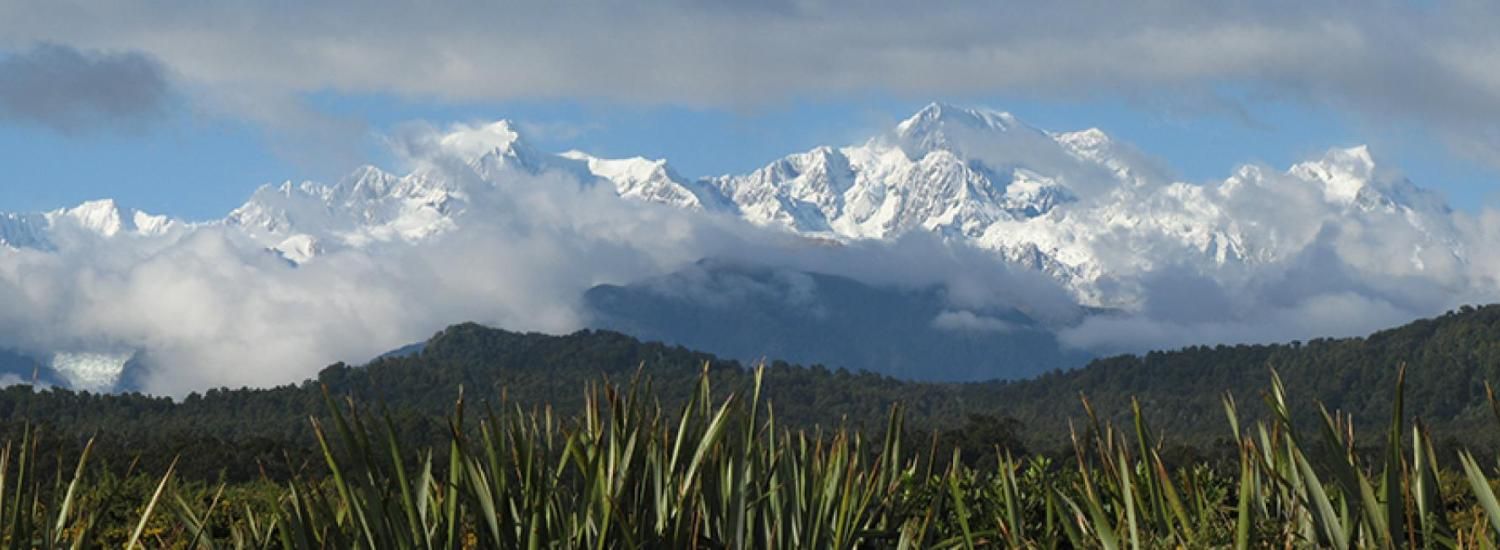Mountains warming faster, scientists report
CIRES, NOAA researchers are part of global team urging better climate monitoring of high-elevation regions

An international team of scientists is calling for urgent and rigorous monitoring of temperature patterns in mountain regions after compiling evidence that high elevations could be warming faster than previously thought.
Without substantially better information, people risk underestimating the severity of a number of already looming environmental challenges, including water shortages and the possible extinction of some alpine flora and fauna, according to the research team, which includes Henry Diaz and Imtiaz Rangwala from CIRES, the Cooperative Institute for Research in Environmental Sciences at the University of Colorado Boulder. Both researchers are part of NOAA’s Earth System Research Laboratories.
The team’s report is published in the journal Nature Climate Change.
“There is growing evidence that high mountain regions are warming faster than lower elevations and such warming can accelerate many other environmental changes such as glacial melt and vegetation change,” said lead author, Nick Pepin of the University of Portsmouth. But scientists urgently need more and better data to confirm this, because there are so few observations from 11,000 feet or higher, he and his co-authors said.
Several reasons that mountain regions are at risk for faster rates of temperature increase:
- Loss of snow and ice at high elevation means more exposed land surface, which can warm up faster in the sun; this effect disproportionately affects higher elevations which are more likely to contain snow and ice.
- Dust and soot deposited on ice- or snow-covered the surfaces at high elevations causes more incoming sunlight to be converted to heat (dust deposition on snow is known to affect the timing of spring runoff in the Rocky Mountains, shifting it earlier by a week or more).
- A warmer atmosphere holds more moisture, which can condense into clouds. That process releases heat, which can affect high-altitude regions that reach up toward the height of cloud formation;
- Increases in the amount of atmospheric water vapor greatly increases the infrared heating of the land at high elevations relative to low elevation regions during winter.
- At lower elevations, aerosol pollutants—haze, dust and smoke—reduce warming, increasing the difference in rates of warming between low and high elevations.
“It’s understandable. Mountains are difficult to study, they are remote and often inaccessible, and it is expensive and often challenging to find ways of effectively monitoring what is happening,” Pepin said. “Mountains are also very complicated landscapes, and have a wide variety of microclimates which makes it hard to see the overall picture.”
The most striking evidence that mountain regions are warming more rapidly than surrounding regions comes from the Tibetan plateau, according to the new paper. There, temperatures have risen steadily over the past 50 years and the rate of change is speeding up. But masked by this general climate warming are pronounced differences at different elevations. For example, over the past 20 years temperatures above 13,000 ft (4,000 m) have risen nearly 75 percent faster than temperatures in areas below 6,500 ft (2,000 m).
The picture is more complicated in other regions. In the Rocky Mountains, for example, there are so few data that reach back more than a decade, researchers have not been able to make broad conclusions about warming trends at various altitudes, said CIRES’ Diaz, who works in the NOAA Earth System Research Laboratories.
However sparse, existing monitoring has been a huge help to scientists trying to understand how various physical processes act to change climate at high altitudes, said Rangwala, who works in NOAA’s Earth System Research Laboratories and also the Western Water Assessment (see sidebar).
Records of weather patterns at high altitudes are “extremely sparse,” the researchers found. The density of weather stations above 4,500 m is roughly one-tenth that in areas below that elevation. Long-term data, crucial for detecting patterns, doesn’t yet exist above 5,000 m anywhere in the world. The longest observations above this elevation are 10 years on the summit of Kilimanjaro.
The team of scientists came together as part of the Mountain Research Initiative, a mountain global change research effort funded by the Swiss National Foundation. The team includes scientists from the UK, United States, Switzerland, Canada, Ecuador, Pakistan, China, Italy, Austria and Kazakhstan. Between them, they have studied data on mountain temperatures worldwide collected over the past 60-70 years.
Improved observations, satellite-based remote sensing and climate model simulations are all needed to gain a true picture of warming in mountain regions, said Raymond Bradley, a climatologist at the University of Massachusetts and one of the report’s co-authors. “We are calling for special efforts to be made to extend scientific observations upwards to the highest summits to capture richer data on what is happening across the world’s mountains,” Bradley said. “We also need a strong effort to find, collate and evaluate observational data that already exists wherever it is in the world. This requires international collaboration.”
The world’s highest mountain, Mt Everest, stands at 8,848 m (29,029 feet). More than 250 other mountains, including Mt Elbrus in Russia, Mt Denali in Alaska, Mt Aconcagua in Argentina and Mt Kilimanjaro in Africa also all top the 5,000-m (16,000-feet) mark.
Download a high-resolution image of Mount Cook from CIRES Flickr.